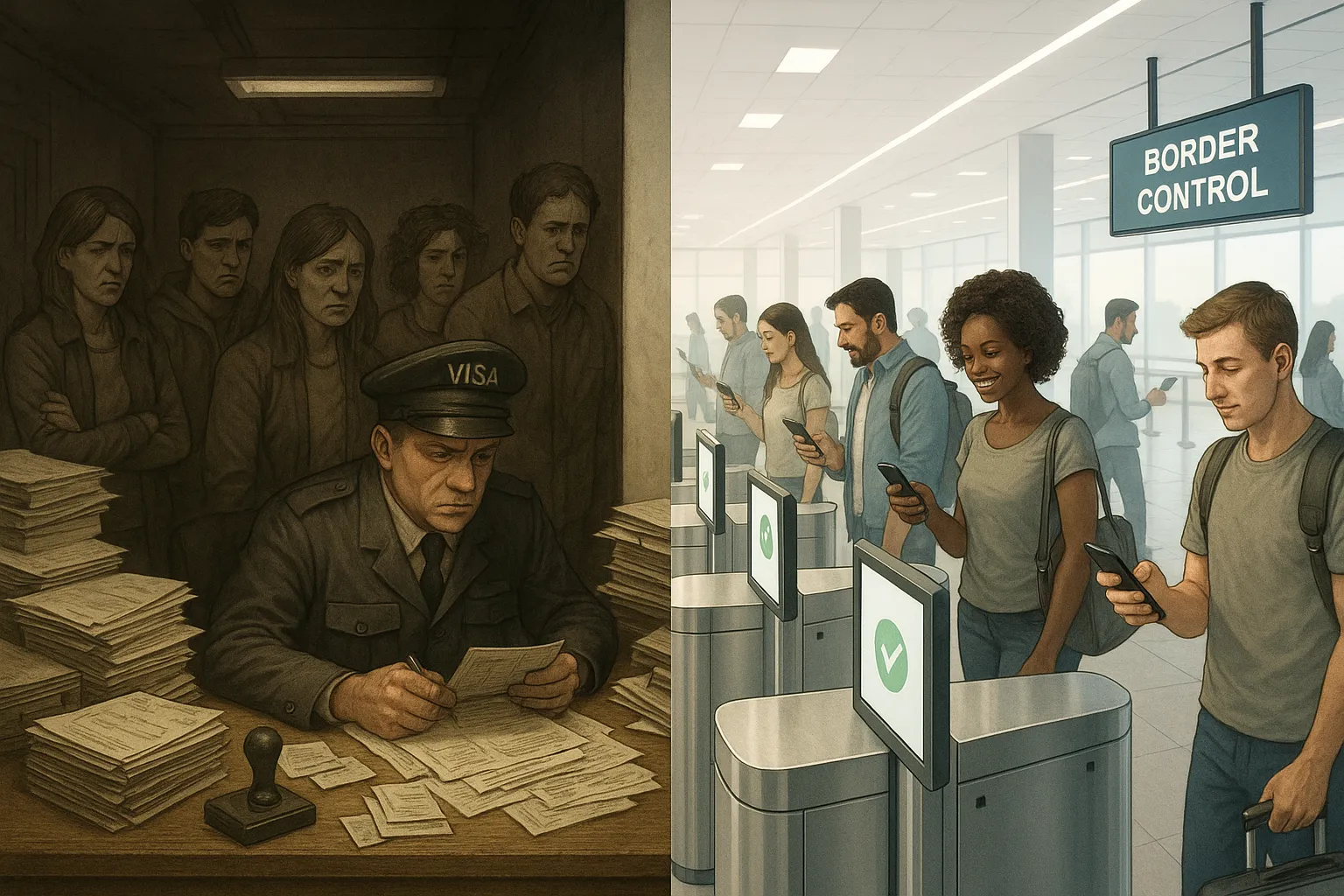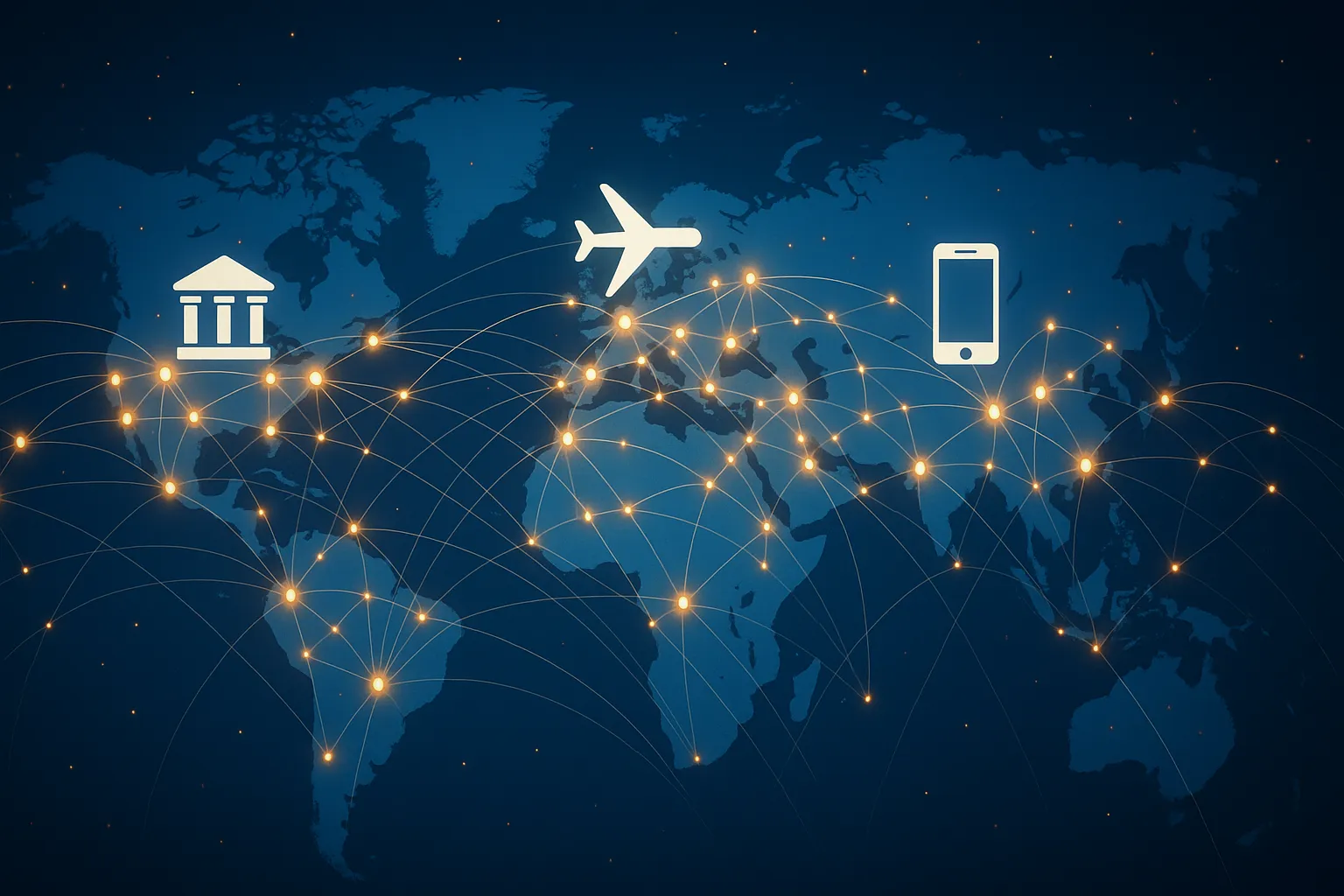From Paperwork to Pixels: Digital Transformation of Visa Offices Worldwide

The Paper Trail Ends Here
“Visa” once evoked mental images of rubber stamps, carbon copy forms, and exhausting queues. In 2025, however, more travelers will apply for entry clearance on a smartphone than inside an embassy. From Canberra to Kigali, immigration departments are trading paper files for cloud dashboards—a shift that is reshaping global mobility and the business models that orbit it.
In this article we take a tour of the forces, technologies, and success stories behind the digital transformation of visa offices worldwide, and—crucially—what it means for airlines, online travel agencies, tour operators and other travel brands looking to stay relevant.
1. Why Visa Desks Needed a Digital Make-over
- Bottlenecks: Paper forms had to be transcribed into case-management systems, creating weeks-long backlogs.
- Fragmented rules: Requirements varied by consulate, confusing both travelers and border guards.
- Security blind spots: Manual vetting made it hard to cross-check watchlists in real time.
- Missed revenue: Governments were losing millions to third-party fixers charging “expedite” fees outside official channels.
The tipping point came during the Covid-19 pandemic. Closed counters forced governments to fast-track remote solutions. Travelers, freshly accustomed to QR codes and digital health passes, now demand the same convenience for every document—including visas.
2. Key Building Blocks of a Digital Visa Office
2.1 Online Portals & eVisas
The foundation is a secure web application where travelers submit data, upload documents and pay fees. Once approved, an electronic visa is issued as an alphanumeric code linked to the passport chip—no sticker required. (New to eVisas? See our deep-dive on the benefits of electronic visas.)
2.2 API Connectivity
Modern visa platforms expose application and status endpoints, allowing airlines and OTAs to embed visa checks directly in their booking flows—a process explained step-by-step in How eVisa APIs work.
2.3 Biometric & Digital ID Verification
Face match algorithms compare selfie videos to passport photos, while fingerprint templates can be captured at walk-through e-gates. Combined with watch-list screening, biometric eVisas sharply reduce identity fraud.
2.4 Automation & AI Decision Support
Rule-based engines pre-screen low-risk travelers and flag anomalies for human review, cutting approval times from weeks to minutes. Machine-learning models continuously refine risk scores based on historical outcomes.
2.5 Cloud-Native, No-Code Tools
Instead of monolithic, 10-year IT tenders, agencies can now deploy visa workflows on modular SaaS stacks—sometimes in under 90 days. Drag-and-drop form builders make it easy to adapt when entry rules change overnight.
2.6 Mobile-First UX
Travelers photograph documents, pay in local currency wallets, and receive push notifications when a decision is ready—mirroring the experience they already expect from ride-hailing or banking apps.
3. Global Snapshot: Where Pixels Replaced Paper First
| Country / Region | Digital Scheme | Result |
|---|---|---|
| Australia | ETA (since 1996) | 90 % of short-term visas processed in <12 h |
| India | e-Visa (2014) | Tourist arrivals +250 % from eVisa countries |
| Rwanda | e-Visa & East Africa Tourist Visa | 60 % cost saving in consular ops |
| Saudi Arabia | e-Visa & instant Umrah visa | 1 M+ visitors during 2024 Hajj season without extra counters |
| European Union | ETIAS (launching 2025) | Unified pre-travel clearance for 60+ visa-waiver nations |

4. Benefits Beyond the Border
For Governments
- 40–60 % reduction in per-application processing cost
- Real-time analytics on visitor flows for smarter tourism policy
- Stronger security through automated INTERPOL & API-PNR checks
For Travelers
- Apply 24/7 from any device
- Faster approvals (hours, not weeks)
- No risk of a lost passport during embassy courier runs
For Travel Brands
- Seamless upsell: Offer visa filings next to seats and bags, generating ancillary revenue (SimpleVisa users report +3-5 % uplift per booking).
- Fewer airport denials, fewer re-tickets, happier NPS scores.
- Differentiation: a “border-ready” badge can lift conversion versus competitors.
Curious how airlines monetize visas? Check our case study on travel visa document systems.
5. The Roadblocks Still Ahead
- Digital Divide – Not every traveler has high-speed internet or an NFC-enabled phone. Hybrid kiosks remain essential.
- Interoperability – Each government defines its own JSON schemas and security tokens, complicating airline integrations.
- Cybersecurity – Centralized databases are honey pots for bad actors; end-to-end encryption and zero-trust architectures are now mandatory.
- Policy Lag – Laws written for ink signatures seldom mention biometrics or AI. Regulators must catch up to technology.
6. How Private Partners Accelerate the Shift
Public agencies rarely have in-house UX, AI and API talent. Platforms like SimpleVisa bridge that gap by providing:
- Ready-made visa processing automation with a >98 % approval rate
- White-label apps that can be branded by an airline, OTA or tour operator in days
- A no-code dashboard for consular staff to tweak questions, fees, and risk rules without IT backlogs
- Compliance with ISO 27001 and GDPR to reassure data-protection watchdogs

7. Preparing Your Organization for a Paperless Border
For Government Visa Offices
- Conduct a value-stream mapping of the current application cycle to identify manual pain points.
- Prioritize a pilot segment (e.g., tourist single-entry) before migrating complex categories.
- Adopt open standards (OAuth 2.0, IATA ONE ID) to future-proof integrations.
For Airlines & OTAs
- Audit booking funnels to locate the drop-off point where travelers leave to “check visa rules”.
- Integrate a visa eligibility widget via API to keep them in the flow.
- Bundle visa fees with dynamic ancillaries—think “Flight + eVisa + Insurance” packages.
For Tour Operators & DMCs
- Train sales teams to verify digital visa requirements during quotation.
- Offer concierge upgrade tiers where your staff submits the e-visa on the client’s behalf.
8. Looking Forward: Smart Borders & Invisible Visas
By 2030 we’ll likely see:
- Self-sovereign digital identity wallets that store visas, health certificates and frequent-traveler profiles.
- AI chatbots answering travelers’ visa questions in 200+ languages, pulling live rule updates from government APIs.
- Risk-based corridors at airports where low-risk passengers stroll through biometric tunnels without stopping.
- Blockchain audit trails ensuring that every data access is logged and immutable, boosting public trust.
The trajectory is clear: paperwork as a concept is on its last legs. Pixels—secure, interoperable and traveler-centric—are the future of cross-border administration.
Conclusion
Digital visa programs are no longer pilot projects; they are fast becoming the global norm. The winners will be governments that deliver “app-store” agility and the travel brands that embed visa compliance deep inside their customer journeys.
SimpleVisa already powers visa automation on 400+ travel sites. If you’re ready to turn paperwork into pixels—and capture new revenue while you’re at it—request a demo today.
Smooth borders make for happier travelers, safer countries, and healthier bottom lines. The stamp, it seems, has finally met its digital match.